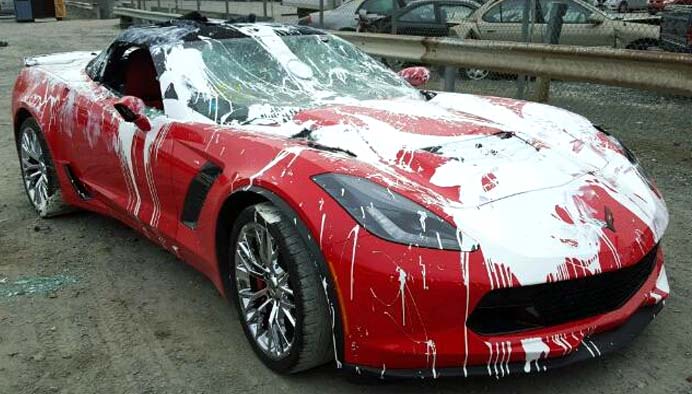
Despite the high costs associated with automobile vandalism, your insurance may assist you in covering them. However, depending on the circumstances, filing a claim may not always be advantageous. The theft of catalytic converters from hybrid and electric vehicles in the United States has recently involved the use of hacksaws. The number of thefts has increased, which has led to an increase in vandalism claims. Theft, vandalism, and weather-related damage are all covered by comprehensive vehicle insurance for your car. Comprehensive coverage is not required in the US. You are not required by any state to have it. However, a "full coverage" policy provides coverage for vandalism-related auto damage. If you don't have comprehensive coverage, your insurance won't pay for damage caused by vandalism. If you're not sure if comprehensive coverage is included in your policy, look at the declarations section of your auto insurance. The declarations section, which is frequently attached to the front of your policy, details the extent of your coverage. If you can't find yours, get in touch with your vehicle insurance company. You might be covered for the following vandalism-related damages under your comprehensive insurance: Your car has been keyed Having paint sprayed on your vehicle or having glue put into the locks Shattering windows or cutting tires You'll need to make a claim if your automobile has sustained significant damage. It may not always be a good idea to file an insurance claim. If the damage to your automobile is not significant, paying out of pocket could be a better alternative. A claim such as this might need the payment of a deductible as well as a rise in your auto insurance rates, but this rise is frequently not as large compared to other claims. In conclusion, if the repair costs are similar to or perhaps slightly higher than your deductible, don't file a claim. Obtaining a quote from a neighboring garage may help you determine what to do next. An vehicle insurance policy's full coverage is the part that covers vandalism. Be aware, though, that comprehensive coverage is not required. Comprehensive insurance covers physical damage to your automobile in circumstances other than collisions. If you want to be covered from vandalism, make sure you get this insurance. Once you are certain that you have coverage, you can easily file a car vandalism case by simply following the step-by-step instructions. Any necessary repairs would be covered if your car was damaged as long as you would have comprehensive insurance. Comprehensive insurance entirely covers vandalism, albeit there is generally a deductible. If comprehensive coverage is included in your vehicle insurance policy, damaging property damage will be covered. When your car is not being driven, it may suffer vandalism, theft, or weather-related damage, all of which are covered by comprehensive vehicle insurance.